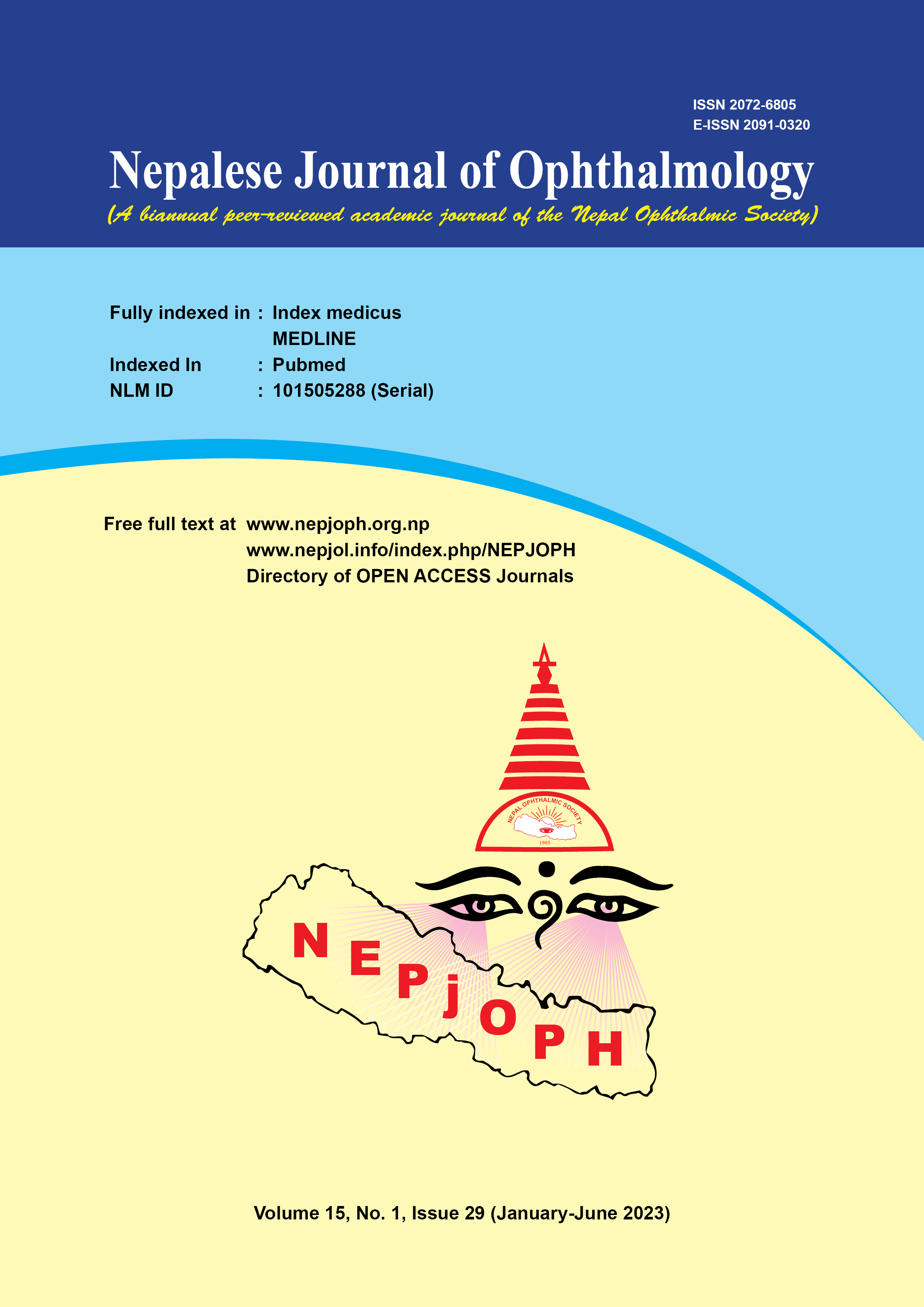Surgical Outcomes of Ahmed Glaucoma Valve and Aurolab Aqueous Drainage Implant in Nepalese Eyes: Comparison in the First Year
DOI:
https://doi.org/10.3126/nepjoph.v15i1.52436Keywords:
Ahmed glaucoma valve, Aurolab aqueous drainage implant, Glaucoma drainage device, Refractory glaucomaAbstract
Introduction: Glaucoma is the leading cause of irreversible blindness worldwide. Though trabeculectomy still remains the surgical modality of choice for the management of glaucoma, the outcome of glaucoma drainage devices (GDDs) too has been encouraging in recent years.
Objectives: To compare the surgical outcomes of Ahmed glaucoma valve (AGV) and Aurolab aqueous drainage implant (AADI) in cases of refractory glaucoma in Nepalese eyes.
Materials and methods: We retrospectively studied the charts of the patients with refractory glaucoma who had undergone GDD implantation at Tilganga Institute of Ophthalmology (TIO), Kathmandu, Nepal. Depending on which GDD was implanted, the eyes of the patients were divided into: AGV group and AADI group. The outcome measures of the study were intraocular pressure (IOP), requirement of antiglaucoma medications (AGMs), surgical success and complications.
Results: There were 24 eyes of 23 patients in AGV group and 31 eyes of 30 patients in AADI group with a median (quartiles) follow-up of 12 (12,12) months. In the final visit, IOP and AGMs were both significantly lower than the baseline in both the groups (P <0.001). The median IOP in mmHg and AGMs were both significantly lower in the AADI group compared to AGV group in the final visit, p <0.001 and p=0.002, respectively. The overall success was similar in both the groups: AGV (n=22, 91.67%) and AADI (n=29, 93.55%), p=1.0. However, complete success was significantly more in AADI group (n=16, 51.61%) compared to AGV group (n=6, 25%), p=0.046. Complications and their rates were comparable between the two groups (p=0.4).
Conclusion: Both AGV and AADI safely and effectively reduced the IOP and the number of AGMs in cases of refractory glaucoma in Nepalese eyes.
Downloads
Downloads
Published
How to Cite
Issue
Section
License
Copyright (c) 2023 Nepalese Journal of Ophthalmology

This work is licensed under a Creative Commons Attribution-NonCommercial-NoDerivatives 4.0 International License.
This license enables reusers to copy and distribute the material in any medium or format in unadapted form only, for noncommercial purposes only, and only so long as attribution is given to the creator.




